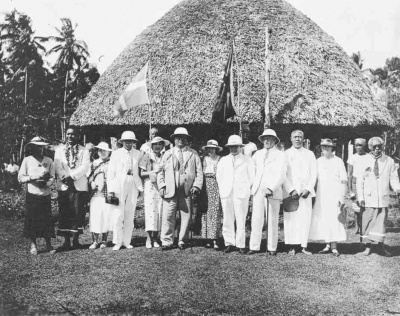Articles
New Zealand in Samoa

New Zealand was ill-equipped to cope with the Western Samoa mandate allocated by the League of Nations in 1920. The Mau movement's passive resistance culminated in the violence of 'Black Saturday', 28 December 1929, which left 11 Samoans and one New Zealand policeman dead.
-
Page 5 – The rise of the Mau movement
Samoa has a history of opposition to European rule, but the opposition that emerged in the late 1920s was organised and widespread.
-
Page 6 – Stepping up the Mau campaign
In January 1928 Mau policeman, dressed in a uniform of a purple lavalava with a white stripe, began enforcing a sā - ban - on European stores in Apia.
-
Page 7 – Black Saturday
One New Zealand policeman and up to 11 Samoans, including Tupua Tamasese Lealofi III, were killed in Apia on Black Saturday - 28 December 1929.
-
Page 8 – Towards independence
On 4 June 2002 Prime Minister Helen Clark offered 'a formal apology to the people of Samoa for the injustices arising from New Zealand's administration of Samoa in its earlier
-
Main image: Olaf Nelson and the place of afakasi in Samoa
One of the Samoan terms for Samoa's part-European population is 'afakasi. This term does not necessarily have the same negative connotations as its English translation, 'half-caste'.

